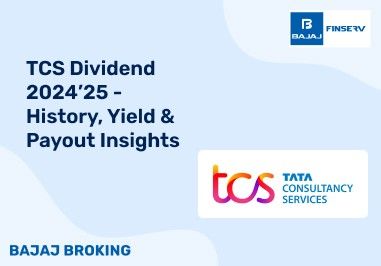Gratuity is a financial benefit that employers provide to employees as a token of appreciation for their long-term service. Governed by the Payment of Gratuity Act, 1972, it is a statutory right for employees working in organisations with 10 or more employees. Gratuity serves as a retirement benefit and acts as financial security for employees after years of service.
Understanding the gratuity rules is essential for both employees and employers, as it helps in financial planning and ensures compliance with legal provisions. From eligibility criteria to tax implications, this article provides an in-depth look at what is the rule of gratuity and how it impacts employees in India.
1. Gratuity is applicable if a company has 10 or more employees
Under the Payment of Gratuity Act, 1972, an organisation must provide gratuity if it has 10 or more employees at any time during the preceding 12 months. Once an organisation falls under the Act, it remains covered even if the employee count drops below 10 in the future.
This rule applies to private sector, public sector, and government organisations.
Companies with fewer than 10 employees may voluntarily offer gratuity, but they are not legally required to do so.
Establishments like factories, mines, plantations, ports, railways, and shops fall under the Act if they meet the employee threshold.
Gratuity is a compulsory financial benefit in eligible companies, and employees must be aware of their rights under this rule.
2. Employees must complete 5 years of service to qualify
To be eligible for gratuity, an employee must have completed at least 5 years of continuous service in the organisation.
Continuous service means the employee must not have any major breaks in employment. However, authorised leaves, absences due to illness, and transfers between departments do not break continuity.
In case of death or disability, gratuity is payable even if the employee has not completed 5 years of service.
This rule ensures that gratuity is reserved for employees who have shown long-term commitment to their organisation.
3. Gratuity is payable not only upon retirement
Many employees assume that gratuity is only paid at retirement, but that is not the case. Employers are required to pay gratuity in the following situations:
Retirement or superannuation – When an employee retires after reaching the organisation’s retirement age.
Resignation after completing 5 years – Employees who have resigned after completing 5 continuous years of employment are eligible for gratuity.
Death or disability – If an employee dies or becomes permanently disabled before completing 5 years, gratuity is still paid to their legal heirs or dependents.
Termination (except in misconduct cases) – If an employee is terminated for reasons other than misconduct, they are entitled to gratuity if they have completed 5 years of service.
Thus, gratuity is not limited to retirement; it serves as a financial cushion in multiple scenarios.
4. It is calculated based on the last drawn salary and years of service
Gratuity calculation follows a standard formula based on the last drawn salary and years of service:
Gratuity = (Last Drawn Salary × 15 × No. of Years of Service) / 26
Explanation:
Last Drawn Salary includes only the basic salary + dearness allowance (if applicable).
15 days of salary is considered for every completed year of service.
26 days represents the number of working days in a month.
Example Calculation:
If an employee has 10 years of service and a last drawn basic salary of ₹ 50,000, gratuity will be:
Gratuity = (50,000 × 15 × 10) / 26 = ₹ 2,88,462
This formula applies to employees in organisations covered under the Payment of Gratuity Act.
5. Employers can forfeit gratuity under specific conditions
Employers have the right to forfeit gratuity if an employee is terminated due to serious misconduct, such as:
Willful damage to company property
Fraud or criminal offenses
Violence or rioting in the workplace
Moral misconduct leading to termination
However, minor infractions or regular termination of employment do not allow an employer to withhold gratuity. Forfeiture applies only in extreme cases as per the Payment of Gratuity Act, 1972.
6. Even in bankruptcy, employers must pay gratuity
Gratuity is a legally protected right, meaning that even if a company goes bankrupt, it must still pay gratuity to eligible employees.
The financial condition of the company does not impact the gratuity obligation.
Employers must set aside gratuity funds in a separate gratuity trust to ensure payments are made, even in cases of financial distress.
Employees have the right to claim their gratuity in case of bankruptcy through labour courts or legal proceedings.
This rule ensures that employees do not lose their gratuity benefits due to financial issues within the organisation.
7. Gratuity up to ₹ 20 lakh is tax-exempt
For employees covered under the Payment of Gratuity Act, gratuity is tax-free up to ₹ 20 lakh. Any amount beyond this is subject to income tax as per the applicable slab rate.
This exemption applies to private sector employees, government employees, and public sector workers.
Government employees enjoy full tax exemption, regardless of the gratuity amount.
This provision helps employees retain more of their gratuity benefits without significant tax deductions.
8. Taxability varies based on the type of employee
The tax treatment of gratuity differs based on the category of the employee:
Government employees – Fully tax-exempt gratuity.
Private sector employees (covered under the Act) – Tax-exempt up to ₹ 20 lakh.
Private sector employees (not covered under the Act) – Tax exemption is limited to the least of the following:
Understanding these tax rules helps employees plan their finances efficiently.
9. The ₹ 20 lakh tax exemption applies to cumulative gratuity
If an employee receives gratuity from multiple employers over their career, the ₹ 20 lakh exemption is applied to the total gratuity received across all jobs.
If an employee has already received ₹ 10 lakh gratuity from a previous employer, only ₹ 10 lakh remains tax-free for future gratuity payments.
Once the ₹2 0 lakh limit is reached, any additional gratuity is fully taxable.
This rule ensures that employees do not claim multiple tax exemptions beyond the prescribed limit.
10. Gratuity paid to a widow or legal heir is fully tax-free
In the unfortunate event of an employee’s death, the gratuity paid to their widow, legal heir, or nominee is fully tax-free.
The ₹ 20 lakh limit does not apply in such cases.
Legal heirs do not need to pay any income tax on the received gratuity.
Employers must pay gratuity irrespective of the years of service completed by the deceased employee.
This provision provides financial security to the family members of deceased employees.
Additionally Read - Gratuity Calculator
Conclusion
Gratuity is a significant financial benefit designed to reward employees for their long-term service and loyalty. Governed by the Payment of Gratuity Act, 1972, it ensures that employees receive financial support upon retirement, resignation, or other qualifying events.
Understanding gratuity rules helps employees plan for the future and ensures that they receive their rightful benefits. From eligibility criteria to tax exemptions, employees should be well-informed about what is the rule of gratuity to make the most of this statutory benefit.













